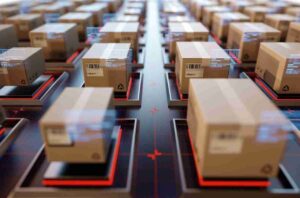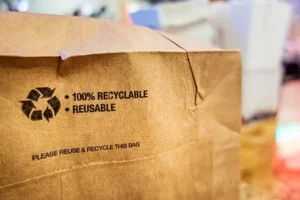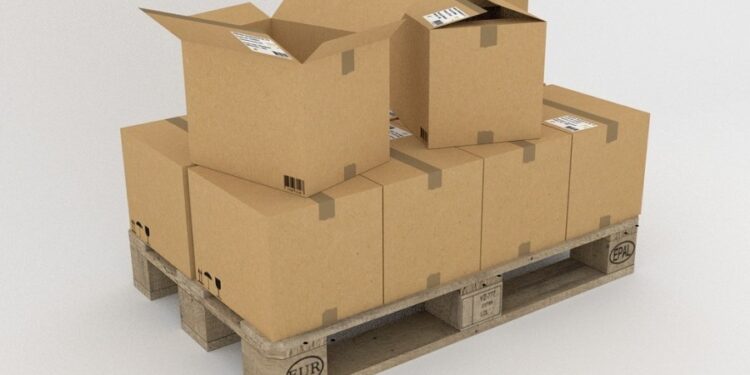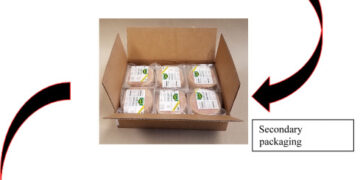Packaging plays a critical role in supply chain efficiency and sustainability. It protects products during transportation and storage, reduces waste, and ensures that products arrive at their destination in good condition. However, packaging can also have a significant impact on supply chain efficiency and sustainability. In this article, we will explore the impact of packaging on supply chain efficiency and sustainability.
Impact on Supply Chain Efficiency
Packaging can have a significant impact on supply chain efficiency. The right packaging can reduce transportation costs, increase storage capacity, and improve handling and distribution. Here are some ways that packaging can impact supply chain efficiency:

Transportation Costs
The size, weight, and dimensions of packaging can impact transportation costs. Larger and heavier packaging requires more space and fuel to transport, which can increase transportation costs. Therefore, designing packaging that is lightweight and compact can reduce transportation costs and improve supply chain efficiency.
Storage Capacity
The size and shape of packaging can also impact storage capacity. Packaging that is too large or bulky can take up more space than necessary, reducing storage capacity and increasing costs. Therefore, designing packaging that is compact and stackable can increase storage capacity and improve supply chain efficiency.
Handling and Distribution
Packaging can impact the handling and distribution of products. Packaging that is difficult to handle, such as irregularly shaped or heavy packaging, can slow down handling and distribution processes, reducing efficiency. Therefore, designing packaging that is easy to handle and transport can improve supply chain efficiency.
Impact on Sustainability
Packaging can also have a significant impact on sustainability. The right packaging can reduce waste, minimize environmental impact, and increase the circularity of materials. Here are some ways that packaging can impact sustainability:
Material Choice
The choice of packaging material can significantly impact sustainability. Packaging materials that are non-recyclable or non-biodegradable can contribute to waste and harm the environment. Therefore, choosing sustainable packaging materials, such as recycled or biodegradable materials, can reduce waste and improve sustainability.
Packaging Design
The design of packaging can also impact sustainability. Packaging that is designed to be reusable or recyclable can reduce waste and increase the circularity of materials. Additionally, designing packaging that is lightweight and compact can reduce the amount of material needed and reduce environmental impact.

Supply Chain Transparency
Supply chain transparency can also impact sustainability. By tracing the origin of materials and the production process of packaging, brands can ensure that the packaging is produced sustainably and ethically. This can lead to increased consumer trust and loyalty and improve sustainability.
End-of-Life Management
End-of-life management is also an essential aspect of sustainability. Packaging that is designed for easy disassembly and recycling can increase the circularity of materials and reduce waste. Additionally, designing packaging that is biodegradable or compostable can reduce environmental impact and increase sustainability.
To improve supply chain efficiency and sustainability, brands should consider the functional requirements of the product when designing packaging. Packaging should not only be visually appealing but also practical and able to protect the product during transportation and storage. Additionally, brands should consider the environmental impact of the packaging and choose sustainable materials and designs that minimize waste and increase circularity.
Moreover, it is essential for brands to collaborate with packaging suppliers and recycling facilities to ensure that the packaging is designed for easy recycling or reuse. Collaboration can also lead to more innovative and sustainable packaging solutions that meet the functional requirements of the product while minimizing environmental impact.
In addition, brands can also leverage technology to improve supply chain efficiency and sustainability. For example, the use of smart packaging can improve traceability, reduce waste, and optimize inventory management. By incorporating technology into packaging design, brands can improve supply chain efficiency and sustainability while also enhancing the consumer experience.
Finally, it is important to recognize that sustainable packaging is not a one-size-fits-all solution. Each brand must evaluate its unique needs and find sustainable packaging solutions that work for their products and supply chain. While it may take time and investment to transition to sustainable packaging, the long-term benefits for both the environment and the brand make it a worthwhile endeavour.
It is also important for brands to educate consumers about the benefits of sustainable packaging and how to properly dispose of it. This can include clear labelling on the packaging or providing information on the brand’s website or social media channels. By educating consumers on the importance of sustainability and how to properly dispose of packaging, brands can increase the likelihood that the packaging is recycled or reused.
Furthermore, brands can partner with recycling facilities or organizations to improve recycling infrastructure and increase the availability of sustainable packaging options. This can include investing in the development of new recycling technologies or supporting organizations that promote sustainable packaging solutions.
In addition, brands can also consider the social impact of their packaging. This includes the impact on workers involved in the production and disposal of the packaging, as well as their communities. By ensuring that the packaging is produced and disposed of in an ethical and sustainable manner, brands can create a positive social impact and enhance their reputation.
Finally, it is important for brands to continuously evaluate and improve their packaging design and sustainability practices. This includes setting sustainability goals, tracking progress, and implementing changes as needed. By prioritizing sustainability and continuously improving packaging design and practices, brands can create a more sustainable future for the industry and contribute to a healthier planet.
In conclusion, sustainable packaging is essential for supply chain efficiency and sustainability. By designing packaging that is lightweight, compact, and sustainable, brands can reduce transportation costs, increase storage capacity, and minimize environmental impact. Brands can also embrace the circular economy, use renewable and recycled materials, and incorporate alternative packaging solutions to increase sustainability and reduce waste. By educating consumers, partnering with recycling facilities, considering the social impact, and continuously improving sustainability practices, brands can create a more sustainable future for the industry and contribute to a healthier planet.

















